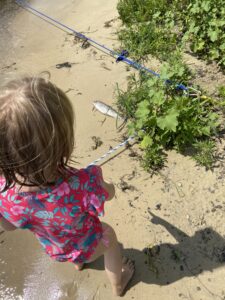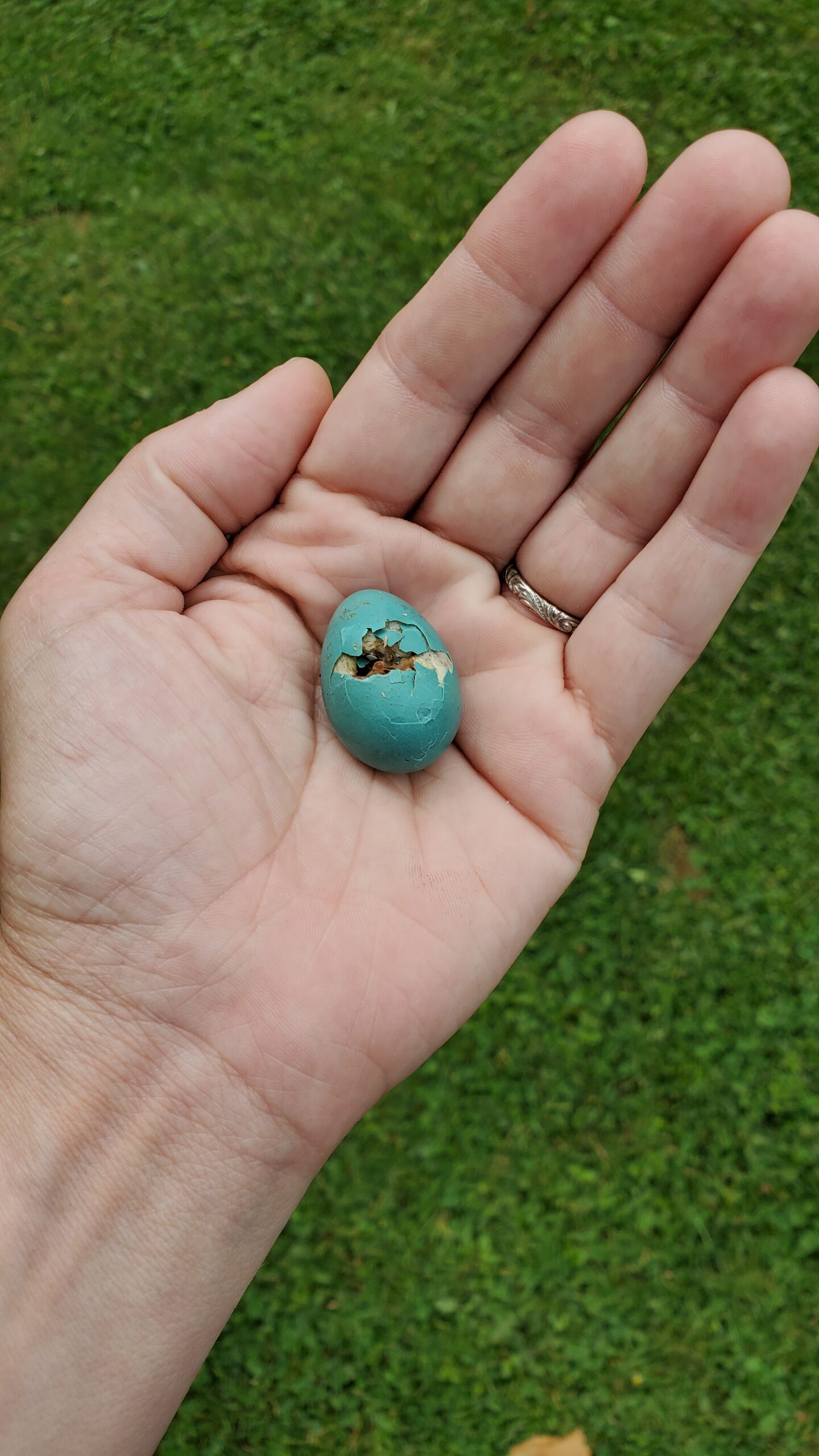It’s a beautiful, sunny day in mid-July, my 5 y/o daughter and I are ankle deep in Lake Chautauqua and a very obviously dead fish has washed up on the shore about 10 feet away.
“What makes you think it might be dead?” I ask. She thinks carefully and I wait patiently for her answer. “The fish isn’t moving. It’s still. And it’s out of the water which is where fish live.” She’s right.
We have had the time for these conversations since everything came to a screeching halt in mid-March. The truth is, we’re talking more about death now but not directly because of COVID. We are adhering to social distancing guidelines which puts us off the beaten path more often. Nature gives us plenty of opportunities to encounter death.

Later that day, we find a robin’s egg on the grass below a tall evergreen tree. It’s so vibrantly blue that I initially suspect it’s a plastic Easter egg, but she turns it over to reveal a cracked hole. Bits of feather can be seen, and what looks like a tiny beak.
“The bird is trying to get out, mom!” she exclaims. “Oh, kiddo. I think the bird might have been hatching but when it fell from so high up, it didn’t survive. I think it has died.” She goes quiet, still carefully holding the egg in her tiny palm.
“How does that make you feel?” I ask. She stays silent for longer than I would normally wait for an answer, but I’ve been practicing patience, so I wait.
“I feel sad for the mom bird,” she says quietly “and I don’t know why it’s here all by itself.”
I don’t know either, but I don’t say that. Instead, I take the opportunity to wonder with her. “I wonder how it fell out of the nest,” I say.
“Maybe the other birds accidentally knocked it out, or maybe a squirrel thought it was a nut,” she answers. We’re exploring mystery together which, at this point, is more important than finding answers.
I’m asking questions and exploring wonder because we have the time. We aren’t running late for anything. We have no scheduled appointments, no one waiting to meet us, and nothing planned besides lunch in an hour or two. Gone are the days of rushing through outdoor activities so we can make it to our next engagement; absent are the crowds on the trails. Downshifting is our new normal. We have time to pause and I let her take the lead.
Since losing both of my parents in the past 3 years, I find myself talking about death, dying and mortality a lot. I’ve also found that children have a lot to teach me about having these conversations. They have a natural sense of curiosity about the world around them because there is so much they don’t know. They are willing to guess; they instinctively understand that there is more than one right answer.
I use a simple framework — what do you know and how can you tell? How do you feel? What do you wonder? Then I pause for an uncomfortable amount of time while I give them space to formulate a response. Kids don’t feel rushed by the conventions of adult conversation. Kids will let you wait.
I’m also learning to apply these lessons to conversations with adults. What do you want to know about my dad’s illness? Does it bring anything up for you, emotionally or otherwise? Do you have any questions? It’s the same simple framework.
Adults are less adept at letting silence creep into conversation. We fill the space with anecdotes about a friend’s aunt who “beat” cancer or a detailed inquiry into medical therapies; we are trying to ease the discomfort of facing the unknown. I’m learning to allow these questions to serve as a pause, not a true reflection of feelings or wonder.
Unlike children, we adults aren’t steeped in the mystery of life and the unknown makes us deeply uncomfortable; we’ve been rewarded for having an answer and we’re out of our element when we don’t have something to say. It’s okay. We have unlearned so much since we were young, but we can relearn. We can assess what we know, explore our feelings and embrace curiosity when we try. It just takes practice.
Someday, my kids will confront death in their own lives; they will lose pets, colleagues, friends, parents and partners. As I encourage them to explore the mystery of mortality now, I hope they grow into adults who can embark on these same important conversations with bravery and wonder.
Kids can embrace silence in conversations about big things, like death. They can pause and give themselves time to process. I’m trying to practice those skills when talking about the important topics of advance care planning and final disposition wishes with my fellow adults. Silence offers us the chance to reflect before responding, a safe place to explore these topics.
Want to keep connected to The Conversation Project? Sign-up for our newsletter(s), follow us on social media (Twitter, Facebook), download our conversation starter resources and feel free to reach us at ConversationProject@ihi.org.


Hello, thank-you for this lovely article, it is beautiful!
Dear Megan,
With much gratitude, I thank you for your beautiful essay.
You’ve captured your daughter’s sense of innocence and wonder…I love your recognition that silence can let us learn more, doing less.